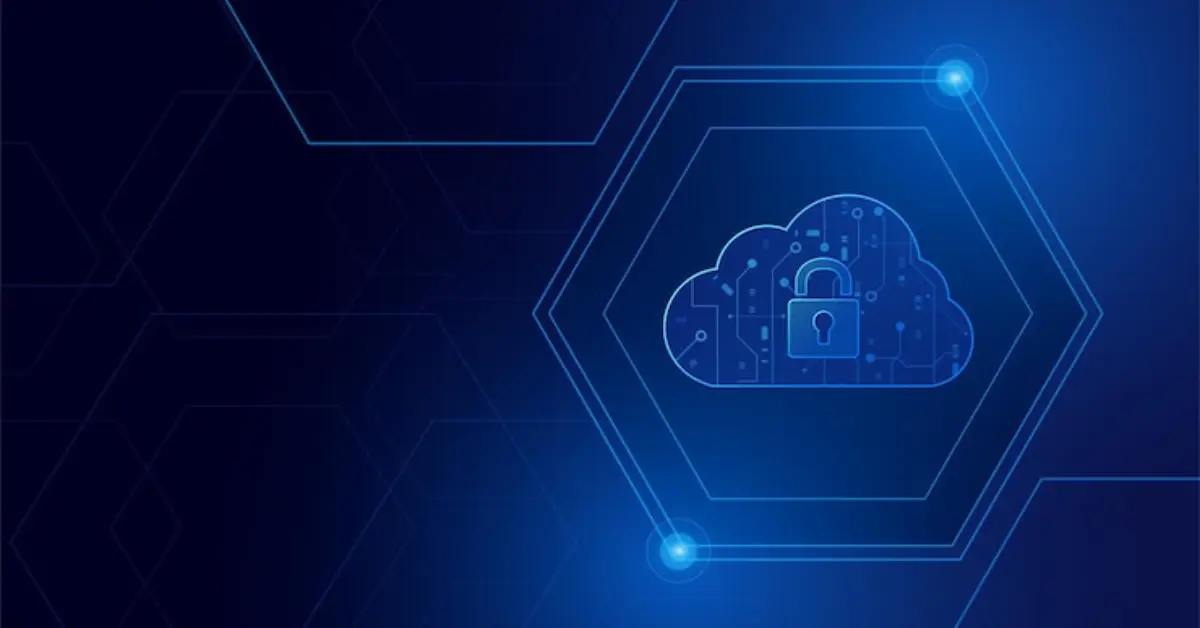In the rapidly evolving landscape of digital transformation, businesses are increasingly relying on cloud infrastructure to store, process, and manage their data. While the cloud offers unparalleled flexibility and scalability, it also introduces new challenges in terms of cybersecurity.
Understanding the Cloud Security Landscape
The evolution of technology has ushered in an era where cloud computing has become the cornerstone of business operations. As organizations increasingly migrate their data and applications to the cloud, understanding the nuances of the cloud security landscape is paramount. In this article, we delve into the intricacies of cloud security, exploring key concepts and best practices to ensure a robust and resilient defense against cyber threats.
The Fundamentals of Cloud Security
Shared Responsibility Model: Cloud security operates on a shared responsibility model, wherein the cloud service provider (CSP) and the customer share specific security responsibilities. While the CSP is responsible for the security of the cloud infrastructure itself, customers are accountable for securing their data, applications, and access credentials.
Data Encryption: Encryption forms the bedrock of cloud security, ensuring that sensitive information is protected from unauthorized access. Data should be encrypted both in transit and at rest, employing robust encryption algorithms and regularly updating encryption keys to mitigate potential vulnerabilities.
Identity and Access Management (IAM): IAM is a crucial aspect of cloud security, governing who has access to what resources within the cloud environment. Implementing strong authentication measures, such as multi-factor authentication (MFA), and regularly reviewing and updating access permissions are essential components of an effective IAM strategy.
Threats and Challenges in the Cloud
Data Breaches and Leakage: Cloud environments are lucrative targets for cybercriminals aiming to compromise sensitive data. Organizations must implement stringent access controls, monitor data transfers, and employ encryption to mitigate the risk of data breaches and leakage.
Misconfigured Cloud Settings: Misconfigurations in cloud settings are common pitfalls that can expose organizations to security risks. Regularly auditing and validating cloud configurations, employing automation tools, and staying abreast of best practices are crucial for maintaining a secure cloud posture.
Distributed Denial of Service (DDoS) Attacks: DDoS attacks can disrupt cloud services by overwhelming them with traffic. Implementing DDoS mitigation strategies, such as traffic filtering and load balancing, is essential to ensure the availability and reliability of cloud resources.
Advanced Security Measures
Security Automation: As cloud environments scale, manual security management becomes impractical. Security automation tools can continuously monitor for vulnerabilities, automatically respond to incidents, and enforce security policies, ensuring a proactive and adaptive security posture.
Zero Trust Security Model: Adopting a Zero Trust model assumes that no entity, whether inside or outside the organization, should be trusted by default. This approach requires continuous authentication and verification of users, devices, and applications, minimizing the attack surface and enhancing overall security.
Cloud-Native Security Solutions: With the rise of cloud-native applications and microservices, organizations need security solutions specifically designed for the cloud. Container security, serverless security, and other cloud-native tools are essential for protecting modern cloud infrastructures.
Continuous Improvement and Compliance
Continuous Monitoring and Compliance: Regularly monitoring the cloud environment for security events and ensuring compliance with industry regulations are vital for maintaining a secure posture. Security Information and Event Management (SIEM) tools can provide real-time insights into potential threats and aid in compliance reporting.
Incident Response Planning: Despite robust preventive measures, incidents may occur. Having a well-defined incident response plan ensures a coordinated and efficient response to security breaches, minimizing the impact and facilitating swift recovery.
Cloud Infrastructure Protection
Securing cloud infrastructure is a critical component of maintaining a resilient and trustworthy digital environment. As businesses increasingly rely on cloud services to host applications, store data, and enable seamless collaboration, the need for robust cloud infrastructure protection becomes more pronounced. In this article, we explore key strategies and best practices to fortify cloud infrastructure against potential threats.
Network Segmentation
Implementing network segmentation is a fundamental strategy to enhance cloud infrastructure protection. By dividing the network into isolated segments, organizations can contain potential security breaches, preventing unauthorized lateral movement. This approach limits the impact of a security incident and adds an extra layer of defense.
Container Security
With the rise of containerization and microservices architecture, securing containers is paramount for cloud infrastructure protection. Organizations should employ container orchestration tools with built-in security features, regularly update container images, and conduct vulnerability assessments to identify and address potential weaknesses.
Web Application Firewalls (WAF)
Protecting web applications from cyber threats is crucial for cloud infrastructure security. WAFs act as a barrier between web applications and potential attackers, filtering and monitoring HTTP traffic between a web application and the internet. They help identify and mitigate various web application vulnerabilities, such as SQL injection and cross-site scripting.
Data Loss Prevention (DLP)
To safeguard sensitive data in the cloud, implementing DLP measures is essential. DLP solutions can monitor, detect, and prevent unauthorized access or transmission of sensitive information. This ensures compliance with data protection regulations and mitigates the risk of data breaches.
Identity and Access Management (IAM)
Strengthening IAM practices is critical for cloud infrastructure protection. Organizations should enforce the principle of least privilege, regularly audit and review access permissions, and leverage advanced authentication methods such as multi-factor authentication (MFA) to control and secure user access to cloud resources.
Security Groups and Network ACLs
Utilizing security groups and network Access Control Lists (ACLs) provides an additional layer of defense by controlling inbound and outbound traffic to and from cloud instances. These tools enable organizations to define and enforce granular security rules, reducing the attack surface and enhancing overall security posture.
Continuous Monitoring and Incident Response
In the dynamic realm of cloud computing, where the heartbeat of modern businesses resides, safeguarding the integrity and security of cloud infrastructure is paramount. As organizations increasingly embrace the benefits of scalable and flexible cloud services, ensuring robust protection against cyber threats becomes a critical imperative.
Network Segmentation: Fortifying Defenses
Network segmentation serves as a crucial defense mechanism, dividing the cloud environment into isolated segments to contain potential security breaches. By segmenting networks, organizations limit lateral movement in the event of a compromise, minimizing the impact of an intrusion and enhancing overall cybersecurity resilience.
Container Security: Embracing Cloud-Native Protection
As cloud-native applications and containerization gain prominence, it’s imperative to implement dedicated container security measures. Utilizing container orchestration tools with embedded security features, routinely updating container images, and monitoring container activities contribute to a secure cloud infrastructure that aligns with the principles of DevSecOps.
Identity and Access Management (IAM): The Keystone of Security
Effective IAM practices are instrumental in ensuring that the right individuals have the appropriate access to cloud resources. Implementing the principle of least privilege, employing multi-factor authentication (MFA), and regularly auditing and updating access permissions are fundamental to fortifying the authentication and authorization layers of cloud infrastructure.
Data Loss Prevention (DLP): Safeguarding Sensitive Information
The ever-present threat of data breaches necessitates the implementation of robust Data Loss Prevention measures. Utilizing encryption, monitoring data transfers, and employing intelligent DLP solutions can prevent unauthorized access and mitigate the risk of sensitive information leakage within the cloud environment.
Incident Response Planning: Proactive Preparedness
No security strategy is complete without a well-defined incident response plan. Organizations must proactively prepare for potential security incidents by establishing clear procedures, conducting regular simulations, and ensuring that response teams are equipped to detect, analyze, and mitigate threats swiftly.
Continuous Monitoring and Incident Response: A Symbiotic Approach
Continuous monitoring is the linchpin of effective cloud infrastructure protection. Real-time visibility into the cloud environment, achieved through Security Information and Event Management (SIEM) tools, allows organizations to detect anomalies and potential security incidents promptly. This continuous monitoring seamlessly integrates with a robust incident response strategy, forming a symbiotic relationship that empowers organizations to respond swiftly to emerging threats.
Security Information and Event Management (SIEM): Eyes on the Horizon
SIEM tools play a pivotal role in providing real-time insights into security events, offering a comprehensive view of activities across the cloud infrastructure. By aggregating and correlating data from various sources, SIEM enables security teams to identify and respond to potential threats promptly, reducing the dwell time of attackers within the cloud environment.
Automation: Enhancing Responsiveness
In the face of the dynamic threat landscape, security automation becomes a force multiplier. Automated incident response, threat hunting, and remediation processes streamline security operations, allowing organizations to respond rapidly to emerging threats and vulnerabilities.
Conclusion
In the era of digital transformation, securing the cloud infrastructure is a continuous journey, marked by vigilance, adaptation, and innovation.
By implementing robust protection measures, embracing cloud-native security solutions, and integrating continuous monitoring with proactive incident response planning, organizations can fortify their digital foundations and navigate the evolving cybersecurity landscape with confidence.



